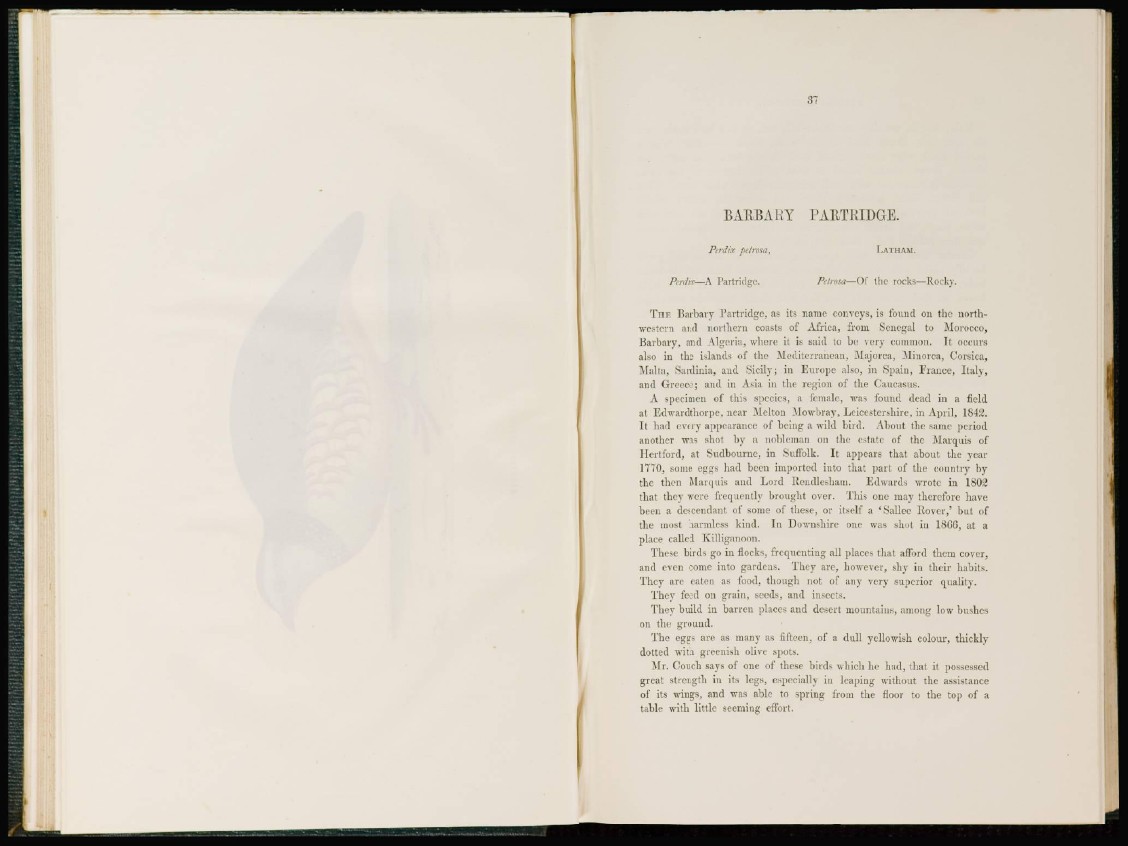
BAEBALIY PAETHIDGE.
Perdtx pcfrosa, LATHAM.
Perdtx—A Partridge. Petrosa—Of the rocks—Rocky.
THE Barbary Partridge, as its name conveys, is found on the northwestern
and northern coasts of Africa, from Senegal to Morocco,
Barbary, and Algeria, where it is said to be very common. It occurs
also in the islands of the Mediterranean, Majorca, Minorca, Corsica,
Malta, Sardinia, and Sicily; in Europe also, in Spain, France, Italy,
and Greece; and in Asia in the region of the Caucasus.
A specimen of this species, a female, was found dead in a field
at Edwardthorpe, near Melton Mowbray, Leicestershire, in April, 1842.
I t had every appearance of being a wild bird. About the same period
another was shot by a nobleman on the estate of the Marquis of
Hertford, at Sudbourne, in Suffolk. It appears that about the year
1770, some eggs had been imported into that part of the country by
the then Marquis and Lord Rendlesham. Edwards wrote in 1802
that they were frequently brought over. This one may therefore have
been a descendant of some of these, or itself a 'Sallee Hover,' but of
the most harmless kind. In Downshire one was shot in 18GG, at a
place called Killiganoon.
These birds go in flocks, frequenting all places that afford them cover,
and even come into gardens. They are, however, shy in their habits.
They arc eaten as food, though not of any very superior quality.
They feed on grain, seeds, and insects.
They build in barren places and desert mountains, among low bushes
on the ground.
The eggs are as many as fifteen, of a dull yellowish colour, thickly
dotted with greenish olive spots.
Mr. Couch says of one of these birds which he had, that it possessed
great strength in its legs, especially in leaping without the assistance
of its wings, and was able to spring from the floor to the top of a
table with little seeming effort.